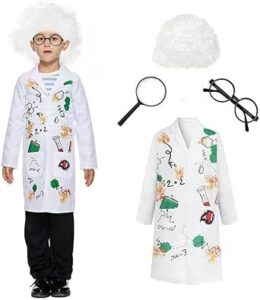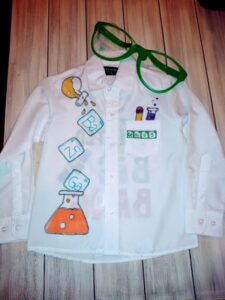Uncategorized
The Science of Designing Clothes for Growing Kids
Designing clothes for children is more than just creating miniature versions of adult outfits. It requires a thoughtful balance of comfort, functionality, durability, and style, all while accounting for the unique needs of growing bodies. Children grow rapidly, and their clothing must accommodate not only their physical changes but also their active lifestyles and sensory preferences. In this article, we’ll explore the science behind designing clothes for growing kids, focusing on aspects like anatomy, materials, and innovation.
1. Understanding Growth Patterns
Children’s growth patterns play a critical role in clothing design.
- Rapid Growth Spurts: Kids experience rapid growth during their early years, which can make it challenging to design clothes that fit well for long periods.
- Proportional Differences: Unlike adults, children have distinct body proportions. For instance, toddlers tend to have larger heads and shorter torsos relative to their limbs, which affects how clothes fit and move.
- Mobility Needs: As children grow, their need for unrestricted movement increases. Clothing must allow for crawling, running, jumping, and other activities.
Designers often incorporate adjustable features, such as elastic waistbands, extendable hems, and stretchy fabrics, to accommodate these growth changes.
2. Prioritizing Comfort
Comfort is paramount in kids’ clothing, as children are more sensitive to irritation caused by rough materials or restrictive designs.
- Soft Fabrics: Materials like cotton, bamboo, and modal are popular for their breathability and softness, ensuring they don’t irritate sensitive skin.
- Seamless Construction: Flat seams and tagless designs prevent chafing, especially for active kids.
- Temperature Regulation: Lightweight fabrics for summer and insulating yet breathable materials for winter help keep kids comfortable year-round.
By focusing on comfort, designers ensure children can focus on play and exploration without distractions.
3. Durability and Wear Resistance

Children are notoriously tough on their clothes, which means durability is a top priority.
- Reinforced Areas: Knees, elbows, and seat areas are often reinforced with double stitching or durable fabrics to withstand wear and tear.
- Washable Materials: Parents need clothes that can endure frequent washing without losing shape, color, or softness. Pre-shrunk fabrics and colorfast dyes are essential.
- Stretch and Recovery: Spandex or elastane blends allow clothes to stretch without becoming baggy, making them ideal for active kids.
Designing durable clothes not only ensures longevity but also makes them cost-effective for parents.
4. Safety Considerations
Safety is a crucial aspect of designing kids’ clothes, especially for infants and toddlers.
- Choking Hazards: Avoiding small buttons, detachable decorations, or loose strings that could pose a choking risk.
- Flame-Resistant Materials: Sleepwear for children often uses flame-resistant fabrics to meet safety standards.
- Non-Toxic Dyes and Fabrics: Ensuring that all materials used are free from harmful chemicals to protect sensitive skin and overall health.
Safety-conscious design gives parents peace of mind while allowing children to explore freely.
5. Encouraging Independence
As children grow, they develop a desire to dress themselves. Designing clothes that encourage independence supports their confidence and motor skills.
- Easy Fastenings: Zippers with large pulls, Velcro closures, and elastic waistbands make it easier for kids to dress themselves.
- Pull-On Styles: T-shirts, leggings, and slip-on shoes simplify the process for younger children.
- Visual Cues: Labels indicating the front and back of garments help kids learn to dress correctly.
Clothes designed with self-dressing in mind can foster a sense of accomplishment in children.
6. Balancing Style and Practicality
Kids’ clothing must strike a balance between style and practicality.
- Fun Designs: Bright colors, playful patterns, and designs featuring popular characters or themes make clothing more appealing to children.
- Gender-Neutral Options: Many parents now prefer versatile, gender-neutral styles that focus on comfort and individuality rather than stereotypes.
- Layering Potential: Clothes designed for easy layering allow parents to adapt outfits for changing weather conditions.
While style is important, practicality ensures that the clothes remain functional for everyday use.
7. Innovative Materials in Kids’ Fashion

Advances in textile technology have opened up new possibilities for kids’ clothing.
- Stretchy Growth Fabrics: Fabrics that can expand as a child grows are being developed, reducing the need for frequent replacements.
- Moisture-Wicking Fabrics: Ideal for active kids, these materials keep them dry and comfortable by drawing sweat away from the skin.
- Anti-Stain Technology: Stain-resistant fabrics are becoming popular for children’s clothing, helping parents save time on laundry.
Innovative materials not only enhance the functionality of kids’ clothes but also make life easier for parents.
8. Sustainability in Kids’ Clothing Design
With children outgrowing clothes quickly, sustainability is a growing concern in the industry.
- Upcycling and Reusability: Designers are creating clothes that can be passed down, with durable materials and timeless styles.
- Eco-Friendly Fabrics: Organic cotton, recycled polyester, and biodegradable materials are being used to reduce environmental impact.
- Multi-Use Designs: Clothes that can adapt to different uses (e.g., a dress that converts to a tunic) extend the lifespan of the garment.
Sustainable design practices not only benefit the planet but also align with the values of many modern parents.
9. Cultural Sensitivity in Design
Incorporating cultural elements into kids’ clothing requires sensitivity and respect.
- Traditional Patterns and Motifs: Designers draw inspiration from various cultures to create unique styles while ensuring authenticity.
- Functional Traditional Wear: Modernizing traditional clothing for everyday use helps children connect with their heritage without sacrificing comfort.
- Ethical Sourcing: Collaborating with artisans and using ethically sourced materials ensures that cultural designs are represented respectfully.
Culturally inspired designs celebrate diversity and allow children to embrace their roots.
10. Customization and Personalization
Personalized clothing is becoming a popular trend in kids’ fashion, as it allows for unique and meaningful designs.
- Custom Embroidery or Prints: Adding names, initials, or favorite characters makes clothes feel special to children.
- Adjustable Features: Customizable elements like removable patches or interchangeable accessories let kids express their individuality.
- Inclusive Sizing: Offering a range of sizes ensures that every child, regardless of body shape, can find clothes that fit well.
Customization fosters creativity and self-expression in children.

Conclusion
Designing clothes for growing kids requires a careful blend of science, creativity, and practicality. From accommodating growth spurts to using innovative materials and ensuring safety, every aspect of design plays a role in creating functional and stylish garments.
At Regal XX Hue, we embrace these principles to create clothing that celebrates childhood while meeting the needs of both kids and parents. Explore our thoughtfully designed collections, where comfort, durability, and style come together to support every stage of your child’s growth.


